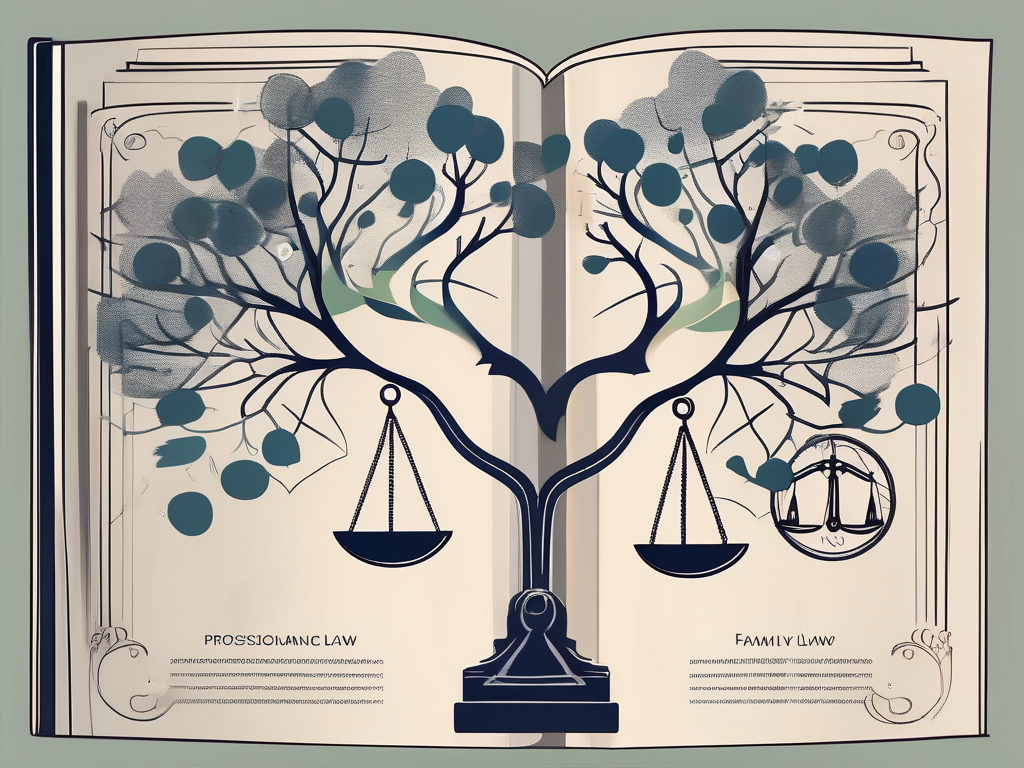Do-It-Yourself Divorce in Ontario: A Comprehensive Guide
Whether due to financial constraints or the aspiration for a more harmonious separation process, numerous couples in Ontario are opting for a do-it-yourself (DIY) divorce. This approach enables couples to navigate the legal dissolution of their marriage, or “divorce order”, without the need for expensive lawyers or protracted court battles. However, before embarking on the journey of DIY divorce, it’s crucial to understand the basics of this process in Ontario.
Are you seeking to comprehend the process of a self-represented or “Do-It-Yourself” divorce in Ontario, or any other Canadian province? Regardless of where you are in your divorce journey, The Smart Divorce provides divorce books, DIY divorce kits, and tools brimming with divorce information to help you gain clarity, perspective, and strategize your next move.
The Pros and Cons of Do-It-Yourself Divorce in Ontario
While DIY divorce offers a more affordable and less adversarial alternative to the traditional divorce process in Ontario, it’s important to weigh the pros and cons before proceeding. One of the main advantages of a DIY divorce is the cost savings. Couples can save a significant amount on court fees and legal fees by eliminating the need for legal representation.
However, it’s important to note that the DIY divorce procedure in Ontario may not be suitable for all couples. Complex financial situations, disagreements over child support or spousal support, or unresolved emotional issues can complicate the Ontario separation process. In these cases, seeking professional legal advice may be necessary to ensure fair and equitable outcomes.
Furthermore, it’s essential to consider the emotional toll of a DIY divorce. With the guidance of a family law expert, couples may find it easier to navigate the emotional aspects of the separation process. The emotional rollercoaster of divorce can be overwhelming, and having someone with legal expertise to lean on can provide a sense of stability and guidance.
Moreover, DIY divorce requires a significant amount of time and effort in the divorce procedure in Ontario. Couples must familiarize themselves with the legal requirements and procedures involved in divorce proceedings. This includes filling out and filing various divorce forms, attending court hearings at the superior court, and ensuring all necessary documentation, including the original marriage certificate and other documents, is submitted correctly. The time commitment can be substantial, especially for individuals with demanding work schedules or other responsibilities.
On the other hand, DIY divorce gives couples more control over the process. They can set their own pace and make decisions without relying on a third party. This can foster a sense of empowerment and collaboration, which may lead to more amicable resolutions.
However, it’s crucial to recognize that DIY divorce does not provide the same legal protection as hiring a lawyer. Legal professionals have the knowledge and experience to identify potential pitfalls and meet all legal requirements. With this expertise, couples can avoid making mistakes that could have long-term consequences.
Another consideration is the complexity of the legal system. Navigating the legal landscape can be daunting, especially for individuals without a legal background. Laws and regulations can vary depending on the jurisdiction, and staying up-to-date with changes or new precedents can take time and effort. Hiring a lawyer can provide peace of mind, knowing that someone with expertise is handling the legal aspects of the divorce.
Lastly, it’s important to recognize that DIY divorce may not always result in a fair and equitable division of assets or custody arrangements. With the guidance of legal professionals, couples may notice important factors or make decisions based on complete information. This could lead to imbalances in financial settlements or custody agreements, potentially causing long-term conflicts or dissatisfaction.
In conclusion, while DIY divorce can offer cost savings and a sense of control, it’s crucial to consider each case’s specific circumstances carefully. Complex financial situations, emotional challenges, and the risk of making legal mistakes should be considered. Seeking professional legal advice is advisable in cases where the process becomes too complicated or when individuals are unsure about their rights and obligations.
Strategies for Negotiating an Uncontested Divorce in Ontario
Negotiating a DIY divorce, or an “uncontested divorce,” requires effective communication and a willingness to compromise. Here are some tips to help couples navigate this process:
Prepare in advance: Before entering negotiations, gather all relevant financial and legal documents, including divorce papers, to ensure an informed discussion. Focus on the big picture: Keep the long-term goals in mind and avoid getting caught up in minor disagreements. Prioritize the well-being of children and the equitable division of property. Consider professional mediation: If communication becomes challenging, seeking the assistance of a mediator can help facilitate productive discussions and find mutually acceptable solutions. Consult a lawyer when needed: While the goal is to navigate the divorce without legal representation, there may be instances where consulting a family law expert is necessary to protect your rights and interests. By following these tips, couples can approach the negotiation process with clarity and a focus on achieving a fair and mutually satisfactory outcome in an agreed-upon separation Ontario.
When preparing for a DIY divorce in Ontario, gathering all the necessary documents is crucial. This includes financial records, such as bank statements, tax returns, and property ownership documents. Having these documents readily available will ensure that both parties can have an informed discussion and make decisions based on accurate information.
While going through a divorce, it is common for emotions to run high and for disagreements to arise. However, focusing on the big picture and keeping the long-term goals in mind is important. By prioritizing the well-being of any children involved and striving for an equitable division of assets, couples can avoid catching up in minor disputes that may hinder the negotiation process.
In some cases, effective communication between the divorcing parties may become challenging. This is where professional mediation can play a crucial role. Mediation involves the assistance of a neutral third party who can facilitate productive discussions and help the couple find mutually acceptable solutions. Mediators are trained professionals who can guide the negotiation process and ensure that both parties have an opportunity to express their concerns and reach a fair resolution.
While a DIY divorce aims to navigate the process without legal representation, there may be instances where it is necessary to consult a lawyer. This is particularly important when protecting one’s rights and interests. A lawyer can provide valuable advice and guidance, ensuring the individual’s legal rights are safeguarded throughout the negotiation process.
By following these tips, couples can approach the negotiation process with clarity and a focus on achieving a fair and mutually satisfactory outcome. It is important to remember that divorce can be challenging and emotional, but with effective communication and a willingness to compromise, couples can successfully navigate a DIY divorce in Ontario.
Understanding the Legal Consequences of Do-It-Yourself Divorce in Ontario Once a DIY divorce is finalized in Ontario, both parties must adhere to the terms outlined in the Divorce Order. These terms can include child custody arrangements, payments, spousal support obligations, and the division of property and assets.
It is important to understand that violating the terms of the Divorce Order can have severe legal consequences. Failure to comply with child support obligations, for example, may result in fines, license suspension, or even imprisonment. It is essential to be aware of these consequences and fulfill all legal responsibilities to avoid potential issues in the future.
When it comes to child custody arrangements, it is crucial to prioritize the child’s best interests. The court will consider factors such as the child’s age, emotional well-being, and relationship with each parent. It is important to create a custody plan that promotes a stable and nurturing environment for the child.
Child support payments are another critical aspect of a Divorce Order. These payments are designed to meet the child’s financial needs, including education, healthcare, and everyday expenses. Failure to make these payments can have serious consequences for both the parent and the child, as it may lead to financial instability and a lower quality of life.
Spousal support obligations are determined based on various factors, including the length of the marriage, the financial situation of each spouse, and their ability to become self-sufficient. It is essential to carefully consider these factors and negotiate a fair spousal support arrangement that considers both parties’ financial needs and capabilities.
In addition to child and spousal support, the division of property and assets is another crucial aspect of a Divorce Order. Ontario follows the principle of equalization, which means that each spouse is entitled to an equal share of the net family property acquired during the marriage. It is important to assess and value all assets and debts accurately to ensure a fair division.
While a DIY divorce can save time and money, it is essential to seek legal advice to ensure that all legal requirements are met and that the Divorce Order is fair and enforceable. Consulting with a family lawyer can provide valuable guidance and help navigate the complexities of the divorce process.
Ultimately, understanding the legal consequences of self-managed divorce filing in Ontario is crucial to protecting your rights and your children’s well-being. By fulfilling all legal responsibilities and complying with the terms of the Divorce Order, you can ensure a smoother transition and lay the foundation for a positive future.
The Impact of Do-It-Yourself Divorce on Children in Ontario
Divorce is a challenging time for everyone involved, especially children. When choosing a DIY divorce in Ontario, whether it’s an uncontested divorce or a contested divorce, it is essential to prioritize the well-being of the children and ensure their needs are met throughout the process.
Open and honest communication with children is crucial. Providing reassurance, answering their questions, and involving them in age-appropriate discussions can help alleviate some of the emotional strain. Additionally, parents must work together to establish consistent routines and maintain a sense of stability for their children during this transition.
Seeking the support of professionals, such as therapists or counselors, can also be beneficial for children and parents alike. These professionals can provide guidance on how to navigate the emotional impact of divorce and assist in facilitating healthy coping mechanisms for all parties involved.
Remember, while a DIY divorce can reduce court fees and offer a more amicable alternative, the well-being of children must always remain a top priority throughout the process. This includes ensuring proper child support arrangements are in place and that the separation agreement aligns with the DIY divorce procedure in Ontario for the best interest of the children.
Conclusion
In conclusion, a do-it-yourself divorce in Ontario offers couples an opportunity to navigate the legal dissolution of their marriage without the need for expensive legal representation. However, it is crucial to fully understand the legal requirements, complete all the necessary divorce forms, and consider the impact on children before embarking on this journey. Effective communication, willingness to compromise, and seeking professional support when needed can help ensure a smoother process and a fair outcome. With careful preparation and a focus on the well-being of all parties involved, a DIY divorce in Ontario can be a viable option to consider.
Empower Yourself to Make Informed Decisions The Smart Divorce® Guide can assist you in making informed decisions by providing you with valuable information. Be aware of your options to avoid litigation. Recognize the importance of managing the “emotional divorce” in addition to the “legal divorce”. Consult with the right professionals to better understand your assets and responsibilities, including your marital home, pensions, investments, and loans.
The Smart Divorce® Guide is a valuable educational resource that can help you save thousands of dollars while preserving your assets. With this information, you’ll be better equipped to manage your divorce, work more effectively with your family lawyer and other divorce specialists, and reduce your legal, financial, and emotional costs. This will enable you to make better decisions for a happier, healthier future. The Smart Divorce Guide is the best investment you can make in gaining clarity and taking better next steps in dealing with the practicalities of divorce while minimizing the emotional and physical suffering that can arise.
Endorsed by courts, family lawyers, and mental health professionals, The Smart Divorce Guide offers advice and information from prominent divorce lawyers, mental health professionals, and parenting experts who are well-versed in the needs of those going through the divorce process. This unique resource simplifies and demystifies divorce.


